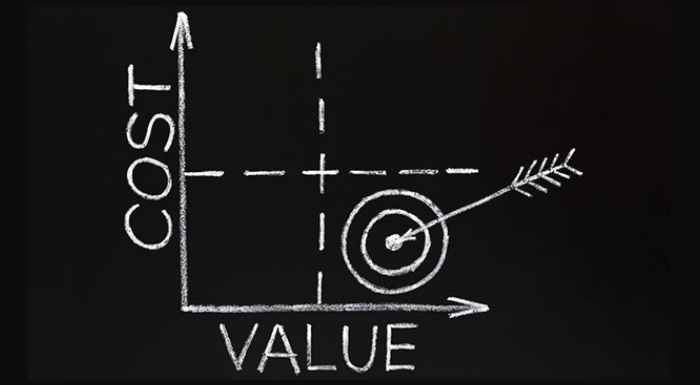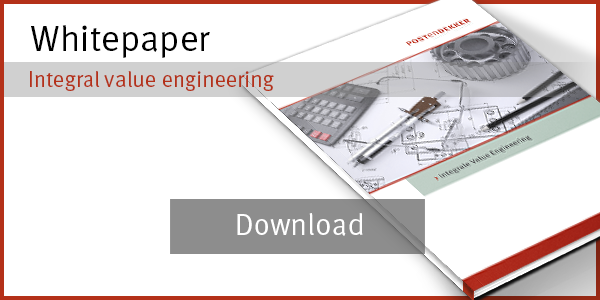
Integral value engineering is a method with which you can reduce your cost price while maintaining the market value of your product. But how do you decide whether value engineering is interesting for your organisation?
In this article I will describe which typical factors can indicate if value engineering can lead to potential big savings or optimisations.
Value engineering is part of the integral design process of a product. With a redesign, a value analysis preceding the value engineering process is necessary. This value analysis occurs on the basis of existing or finished products and can thus be the basis of value engineering.
It is difficult to predict what exactly value analysis and value engineering result in. This depends on a great many factors, described below in four typical indicators:
1) The age of the present design
A design of 10 to 15 years old is set up on basis of materials and production methods in accordance with the technique at the time. The last decade, new materials and production techniques have been developed and price levels and technical possibilities have changed dramatically.
Several examples of this include:
- Deployability and quality of laser cutting for sheet metal and pipe;
- The use of fully automated welding/processing stations for delivering faster, cheaper and also better quality results;
- Composite materials, but also improved availability of price levels of technically high-grade alloys and polymers;
- The accuracy and deployability of simulation, FEM and design optimisation software.
Nowadays, different design choices are made in comparison to 10 years ago. It is also possible now to design more efficiently by using software tools. So, age is an excellent indicator for possible savings or optimisation.
2) Maintenance of the supply chain
The before mentioned developments also could have impact on price levels, delivery times and availability of materials and components. Globalisation causes other sources or producers to have become accessible and competitive. Components or semi-finished goods that were purchased for many years from the same supplier under the same conditions, logically have the potential to cause a reduction in value engineering.
Production numbers change continuously during the life cycle. With a badly maintained supply chain you will often see that prices are still based on the numbers of shortly after the introduction of a product. Effective agreements with the right suppliers, based on current numbers and optimally matched to lead times, stocks and logistics, could make a great difference. Also, re-evaluation of Make-or-Buy strategies are worthwhile from time to time.
3) Changes in market demand
Normally, when developing a new product, an assessment is made of the intended production numbers. Based on these numbers, but often also on the available development budget and intended sales price, the desired FKP is interpolated. After approval, a product is designed so that with regard to production techniques, quality and costs match with the intended numbers as optimally as possible. If, after a while, demand deviates with regard to the prognosis, then it could be wise to reconsider the design choices that were made.
4) Changes in processes
Changes in the sales process, but also in operational or logistic processes, could be reason for huge savings by integral value engineering. Here too, these matters should each be included in the integral modular development of a product. Changes in the sales channels or distributor networks could be of influence on margins and sold implementations/options.
It makes quite a difference whether the sold products are part of the standard, or if they go through the operational process labelled as ‘special’. This obviously also applies to the logistic process. How to deal with stocks and lead times is partly determined in the design of a product. So you would do well to adapt your product, if you would like to optimise your product on it, or the other way around.
Would you like to learn everything about Value Engineering? Then download our whitepaper below!












